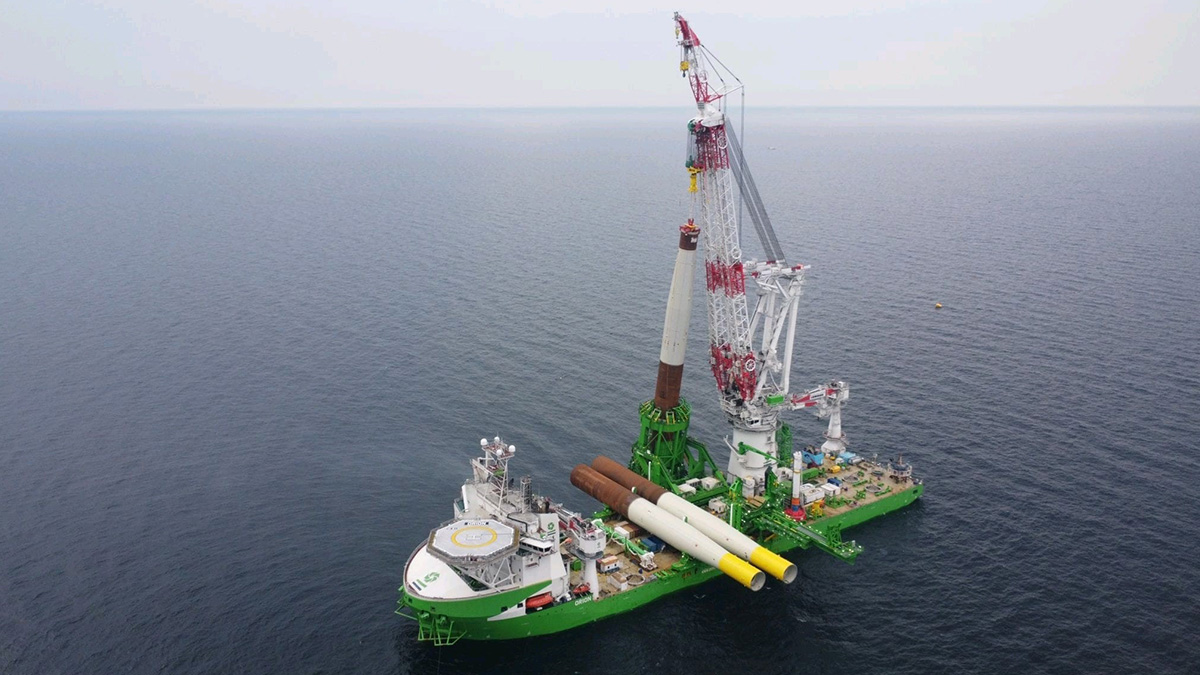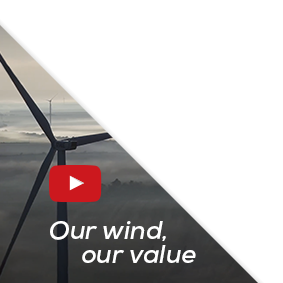14 June 2022
Europe’s offshore wind expansion will depend on vessel availability

A major expansion of Europe’s offshore wind capacity is on the horizon and Poland wants to be a leading player. The country aims to build 28 GW of new offshore wind capacity by 2050. A new report now finds that the upcoming global shortage of specialised offshore wind vessels might pose a risk for project execution in Poland and worldwide. Poland should see the shortage as an opportunity to build up a fleet of modern vessels to service national and international markets.
At the Polish Wind Energy Association’s Annual Conference 2022 in Serock, Poland, WindEurope and the Polish Wind Energy Association published a new report on the availability of offshore wind vessels up to 2030. The report, focusing on the Baltic Sea region, concludes that investments in new vessels are urgently needed for Poland and other Baltic Sea countries to deliver their current offshore wind ambitions.
Poland does not have any offshore wind farms yet. But they want to become the leading country for offshore wind in the Baltic Sea, installing around 6 GW by 2030 and 11 GW by 2040. The first offshore wind farm could enter into operation as soon as 2026.
They are not the only Baltic Sea country with offshore wind ambitions. Latvia, Estonia and Lithuania all want to commission their first offshore wind turbines before 2030. Sweden has identified areas in the Baltic Sea for future wind farms. And experienced players like Germany and Denmark are determined to further increase their offshore wind capacity in the region.
The total offshore wind capacity in the Baltic Sea will reach 35 GW by 2030, up from 2.8 GW in 2021. Most of these new projects will be built towards the end of the decade: nearly 31 GW will be built in the period 2026-2030.
Over the period of 2011-2020 the global offshore wind market grew on average by 22%. There will be more competition for specialised offshore wind vessels, as the growth of the market accelerates. It is unlikely that Poland and other Baltic Sea countries can contract large numbers of vessels from other markets, as the expansion of offshore wind is gaining momentum worldwide. The EU alone wants to build 300 GW of offshore wind by 2050, up from 15 GW today. This poses the question: will we have enough specialised offshore wind vessels?
Shortage of offshore wind vessels ahead
The report finds a shortage of Foundation Installation Vessels (FIV) and Wind Turbine Installation Vessels (WTIV) already by 2024 and 2025. But the biggest demand for FIVs and WTIVs will be between 2028 and 2030. By the end of the decade single turbines could reach up to 20 MW in scale. During the peak, 5-10 FIVs and 5-9 WTIVs will be needed in the Baltic Sea. These vessels are facing additional challenges as offshore wind turbines are increasing in size and weight.
For Cable Laying Vessels (CLV) the gap between supply and demand will be even greater over the next eight years. Poland alone will need 3-4 of these vessels.
The availability of Service Operation Vessels (SOV) used for operation and maintenance activities should not pose a problem, although investments in new SOVs are needed. Building new SOVs takes less time and other vessels can be converted into SOVs.
If Europe invests in its FIV, WTIV and CLV fleet now, the worst shortages in the period 2028-2030 can still be avoided. If it fails, the build out of offshore wind in the Baltic Sea and elsewhere could face significant delays. Therefore the report urges Governments to address the looming shortage as soon as possible.
Poland has a long shipbuilding tradition. Given Poland’s offshore wind targets of 6 GW by 2030 and 11 GW by 2040, Poland has a unique opportunity to become an offshore wind hub, serving its local wind farms but also the wider Baltic Sea region. Governments cannot afford to hold up these vital investments in the transition from imported fossil fuels to competitive and home-grown wind energy.
Europe’s wind energy supply chain in poor condition
The lack of specialised vessels for offshore wind operations is just one indication of the poor condition of Europe’s wind energy supply chain. The European wind industry is facing an unprecedented combination of overlapping challenges: the post-COVID rebound and its effect on the costs of materials and shipping, ongoing lockdowns in China and their effects on global supply chains and the war in Ukraine further reducing the availability of key raw materials. In the first quarter of 2022 all five European wind turbine manufacturers were operating at a loss.
New vessels require significant new investments. For investors and new ship owners to purchase new additions to the fleet, Governments around Europe should create an investment-friendly environment by providing clear auction schedules and timelines for future installations. They must ensure that these timelines are met which crucially means streamlining national permitting procedures. And they should avoid imposing additional costs on offshore wind developers. To this end Governments should not use negative bidding in offshore wind auctions.


